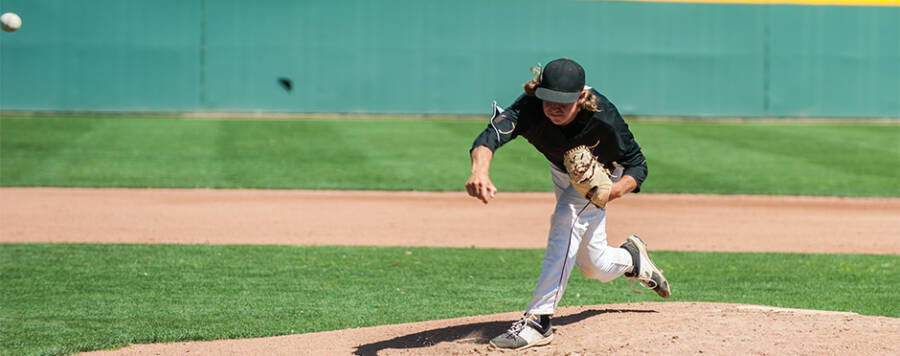Step 1 – Nip Lingering Problems in the Bud
Addressing any lingering issues from the spring, summer, or fall seasons is key to ensuring athletes are ready to complete their training program this winter. It is not normal to have pain when throwing! If you or your athletes have any soreness, tension, or unnatural feelings following a practice, game, or season, be sure to get them checked out by a professional who specializes in overhead athletes.
Step 2 – Build a Strong Base & Core
There is a TON of research about the amount of stress that is placed through the body during the act of pitching/throwing. Although players are often labeled as having a “strong arm,” those athletes typically have a lot of strength through their thighs/hips. The amount of force from your legs directly correlates with pitching speed, so the focus of your training needs to be on your legs. As pitching is a transfer of force from your back leg to your front and up to your arm, training those muscles to create and accept that stress is critical. Your legs are the first link in the chain of creating pitch speed:
- Make sure there is adequate rotation through your hips
- Strengthen your push leg to create force
- Strengthen your front leg to accept the force
The next link in the chain is your core. Your core needs to be able to transfer the force from your legs to your arm so there are no weak links where pitch velocity can escape. The rotation through your torso also needs to be controlled to ensure you are as efficient as possible when throwing. If your training does NOT include core stability, it may be time to revamp your program to reduce the risk of arm injuries in the spring. Start by focusing on the following:
- Make sure there is an adequate rotation through your torso
- Strengthen your core to control that rotation
Step 3 – Don’t Forget About the Arm
I know I have been telling you that the arm should not be the focus of your training, but the last link in the chain is the arm’s ability to transfer speed from your legs to your core to the ball. Training for the arm should focus on improving strength around the shoulder blade, high-speed stabilization of the shoulder joint, and building strength in your forearm. Remember when I said that arm pain is NOT NORMAL for pitchers? Pitching with pain drastically increases your risk for structural damage in the arm. For our arm to stay healthy, we need to create a strong link for speed to get from the torso to the ball for pitch velocity:
- Start by regaining any motion that was lost through the arm during your season
- Strengthen the stabilizers of the shoulder and shoulder blade at high speed
- Build strength in the forearm
Step 4 – Ask for Help
If you are reading this and still have questions on specifics, know that there are professionals who specialize in overhead athletes out there who can help you make the most of your offseason. We work with athletes, coaches, parents, teams, clubs, and other performance professionals to help you focus on staying ready for your sport so that you can avoid injuries in the spring.
Keep Training
Try to incorporate these steps into your training to enhance your performance and reduce injury risk. If you have further questions or would like to work on individual deficits, contact an Athletico near you to set up a free assessment. Free assessments are available in the clinic and virtually through our Telehealth platform.
*Per federal guidelines, beneficiaries of plans such as Medicare, Medicaid, Tricare, VHA and other federally funded plans are not eligible for free assessments.
The Athletico blog is an educational resource written by Athletico employees. Athletico bloggers are licensed professionals who abide by the code of ethics outlined by their respective professional associations. The content published in blog posts represents the opinion of the individual author based on their expertise and experience. The content provided in this blog is for informational purposes only, does not constitute medical advice and should not be relied on for making personal health decisions.
Scott was a physical therapist at Athletico Physical Therapy at the time of this blog.

 width="900"
height="356"
>
width="900"
height="356"
>
